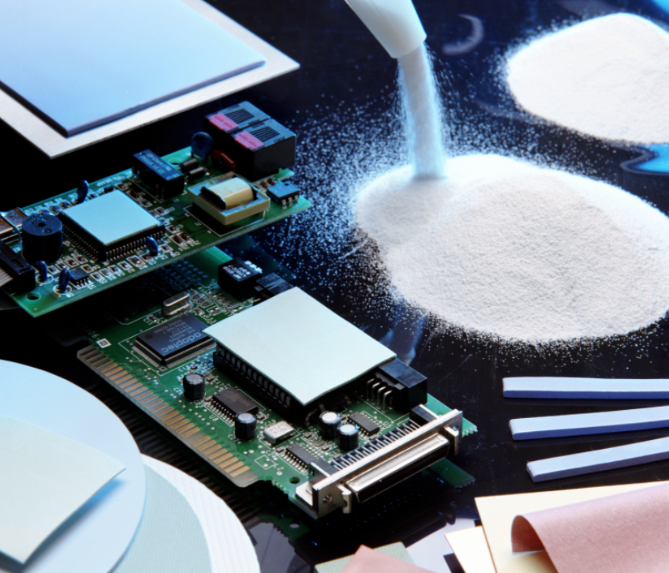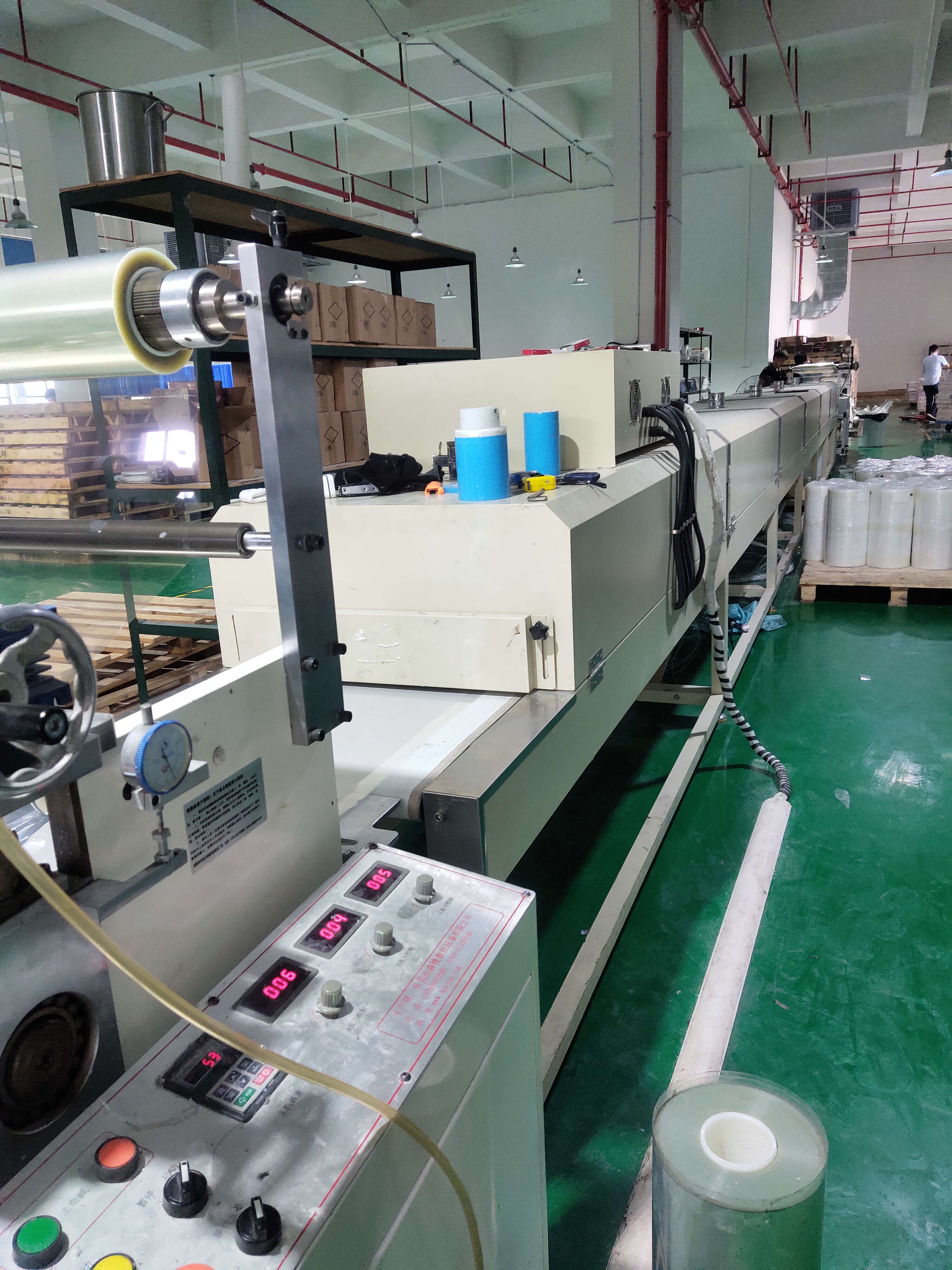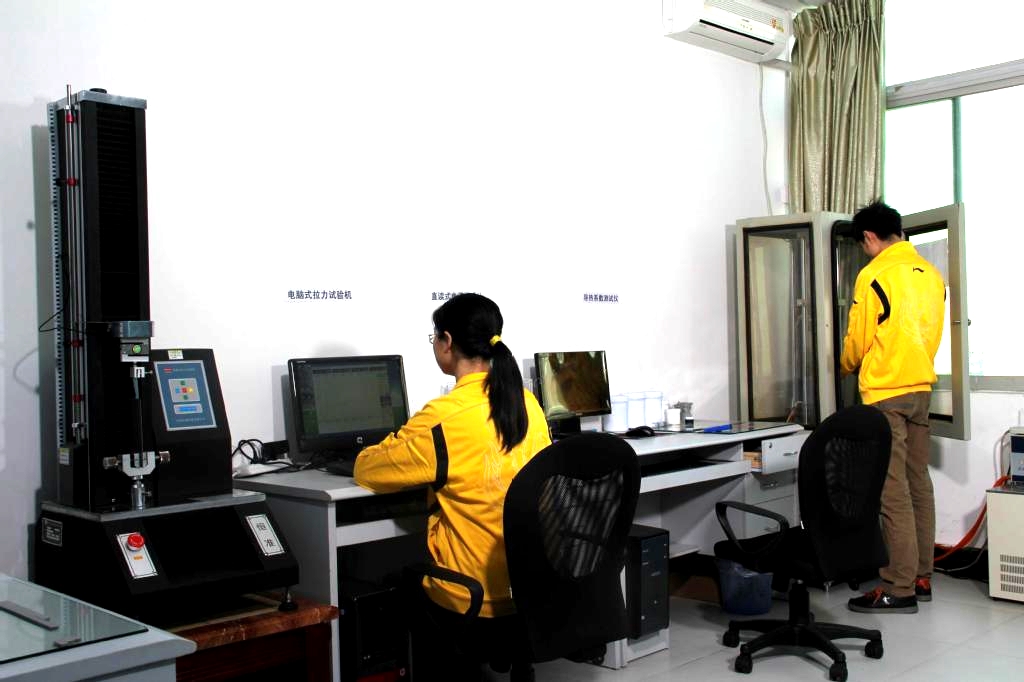There are two main methods for the production process (production process) of thermally conductive silicone sheets: one is to use a compounded rubber solid (solid silicone) to press and process a thermally conductive silicone sheet. The product material produced by this process is made of peroxide. It has poor environmental performance and requires multi-layer production processes such as rubber mixing, opening and refining, trimming, weighing, molding, tearing flash, and sulfur extension. The main features of this technology are that the quality of the finished product is better controlled, the quality stability is high, and the cost is low. The other is liquid silicone rubber injection molding products. This process is directly produced by liquid silicone rubber injection molding machines. After the machine is installed, the entire material flow is carried out in a sealed state, without manual intervention and without production. Environmental impact, and the material is made of platinum as a vulcanizing agent, and the environmental protection performance is very good. This technology has high production efficiency, but it is difficult to grasp the pre-configuration of ingredients, and the product performance cannot be changed in the middle.
The production process of thermally conductive silicone sheet
Now I will introduce the production process of thermally conductive silica gel sheet prepared by solid silica gel as raw material. The process mainly includes five steps: raw material preparation → plasticizing, mixing → molding and vulcanization → resting and cutting → inspection.
1. Prepare raw materials
Ordinary organic silica gel has low thermal conductivity and poor thermal conductivity, generally only about 0.2W/m•K. If the corresponding thermal conductive filler is added to the ordinary silica gel, the thermal conductivity of the silica gel can be greatly improved. The most commonly used thermal conductive fillers in the production process are the following: metal oxides (such as Al2O3, MgO, BeO, etc.), metal nitrides (such as SiN, AlN, BN, etc.). The thermal conductivity of fillers is not only related to the material itself, but also closely related to the particle size distribution, morphology, interfacial contact, and intramolecular bonding degree of thermally conductive fillers. In general, fibrous or foil-like thermally conductive fillers have better thermal conductivity. The price of thermally conductive fillers is also very different. The price of good thermally conductive fillers is more than ten times higher than that of inferior thermally conductive fillers. This is also the main reason for the large price difference of thermally conductive silicone sheets on the market.

When preparing raw materials, the ingredients must be accurately weighed according to the formula. In order to make the raw rubber and the compounding agent mix evenly with each other, some materials need to be processed. , and then cut the glue and break the glue into small pieces; block compounding agents such as paraffin, stearic acid, rosin, etc. need to be crushed; liquid compounding agents (pine tar, coumarone) need to be heated, melted, evaporated water, and filtered impurities; powder; If the compounding agent contains mechanical impurities or coarse particles, it needs to be screened and removed.
2. Plasticizing and mixing
Plasticizing and kneading are a process in the processing of silica gel. The raw rubber itself is elastic, but it lacks the necessary plasticity during processing, so it is not convenient for subsequent processing and shaping. In order to improve the plasticity of raw rubber, it is necessary to masticate the raw rubber. Reduce the molecular weight and viscosity of the raw rubber to improve the plasticity of the raw rubber, and at the same time make the raw rubber produce proper fluidity to meet the needs of further processing in mixing and molding. The raw materials of thermally conductive silicone sheets are generally destroyed by mechanical high-speed stirring. After color matching and mixing, it changes from milky white silica gel to various colors.
3. Forming and vulcanization
The performance of the thermally conductive silicone sheet needs to meet the flexibility, elasticity, and tear resistance at the same time, so it is necessary to perform a secondary vulcanization (curing) operation on the silicone sheet. After the liquid thermal conductive silicone is heated and formed in the early stage, its cross-linking density is not enough, and further vulcanization reaction can increase the tensile strength, resilience, hardness, swelling degree, density, and thermal stability of the thermal conductive silicone sheet. Vulcanization has greatly improved. If the secondary vulcanization is not carried out, the performance of the thermally conductive silicone sheet produced may be affected to a certain extent, and a product with better performance cannot be obtained. The performance parameters of the thermally conductive silicone sheet after primary vulcanization are not exactly the same as those of secondary vulcanization, which are related to the actual operation process and steps.

4. Rest and cut
The thermally conductive silicone sheet after high temperature treatment needs to be placed for a period of time, and other rapid cooling methods cannot be used quickly. Instead, it needs to be naturally cooled and then cut into different shapes and sizes according to the size provided by the customer, otherwise it will directly affect the thermal conductivity of the thermally conductive silicone sheet. Product performance.
5. Finished product inspection
After the thermal conductive silicone sheet is made into a finished product, some related items need to be tested, mainly including: thermal conductivity, working temperature, breakdown voltage, volume resistivity, flame retardancy, tear strength, thickness, hardness, etc. As a well-known manufacturer of thermally conductive silicone gaskets in the industry, all products of Leaping Electronics must meet the UL94-V0 level of flame retardancy, and comply with the EU ROHS directive and UL certification requirements.
Dubang Technology is an early enterprise that produces thermally conductive silicone sheets, and has passed the SGS quality management system certification. Every production process of thermally conductive silicone sheets is operated in strict accordance with the requirements. The flame retardant grade of the thermally conductive silicone sheet is required to reach the UL94-V0 level and comply with the EU ROHS directive. Dubang thermal silica sheet has a wide range of thickness options, the conventional thickness is from 0.3mm-18.0mm, and other thicker ones can also be customized. The thermal conductivity span is large, the thermal conductivity is complete from 1.0-9.9W/mK, the inventory is sufficient, and the sample test is free


